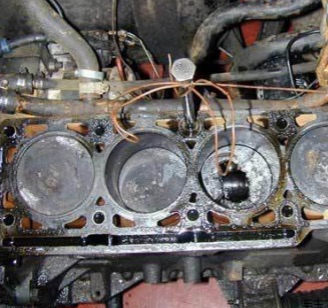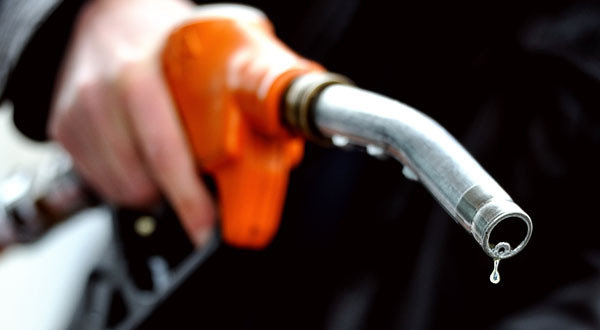
Speaking of car with electronic fuel injection maybe a layman can tell one or two of its advantages, such as energy saving, environmental protection and so on. With the popularization of electronic fuel injection, some of its special faults also follow, the most typical is the symptom of carbon deposit.
Carbon deposit in valve, combustion chamber and intake pipe
1. Carbon deposit in valves and combustion chamber
The characteristics of the engine with electronic fuel injection determine the ignition( injects the air- fuel mixture, then ignites). When we turn off the engine, the ignition is cut off immediately, but the working cycle has done, the useless fuel still exist. Due to volatilization of gasoline, some substance (wax and gel)will stay on inlet valve and combustion chamber wall and harden after repeated heating. over time, the carbon deposit has been generated. If the engine burns oil, or the gasoline is filled with low quality impurities, the valve exists more carbon deposit.
The structure of carbon deposit like a sponge, when the carbon deposit has existed, the valve will absorb the air-fuel mixture in the process of ignition, resulting in thin mixture, high fuel consumption, poor engine performance and acceleration, backfire, unstable idle speed and excessive exhaust emissions, even a hard engine start. To make matters worse, leading to poor sealing performance of the valve, so that a cylinder completely do not work, even the valve does not return back due to adhesion. At this point the valve and piston will produce motion interference, and ultimately damage the engine.

2. The carbon deposit in the intake pipe
Since each piston of the engine does not work synchronously, when the engine is shut off, the intake valve of some cylinders cannot be completely closed. Some unburned fuel is continuously evaporated and oxidized, then produce some soft black carbon deposit in the intake pipe, especially behind the throttle valve. On the one hand, the carbon deposit will make the wall of the intake pipe rough, and the intake gas will generate vortexes in these rough places, affecting the intake air and the quality of the mixture.
On the other hand, these carbon deposit will block the idle speed channel, so that the idle speed control device get stuck or beyond its adjustment range, causing low idle speed, engine shaking at idle, ancillary devices failure, engine stalling when we don’t step on the accelerator pedal, excessive exhaust emissions, high fuel consumption. If you have trouble picking up speed, refueling, tempering, or hard cold start, your valve is likely to have carbon deposit. If your car has low idle speed and vibration while idling, the accelerator pedal is stuck, or no idle speed after changing the battery, indicating severe carbon deposit, you should go to the professional car service center in time.
It is very easy to diagnose the carbon deposit in the intake pipe in the automobile maintenance, and the degree of carbon deposit can be clearly seen by removing the throttle valve. But the diagnosis of valve carbon deposit has always been a challenge, and there are generally three diagnostic methods available in professional car service center.
Specific methods
Take the engine apart and you check for carbon deposit. This is intuitive, but it takes time and effort, and no matter what parts are disassembled and installed each time will more or less affect its performance and shorten its service life.
1. Endoscopy
Remove the spark plug or nozzle and use an endoscope to see how much carbon deposit in the valve. This method is convenient, but endoscopes are expensive and not very useful in maintenance, so not all service center are equipped with them.
2. Observe the feedback voltage change
A diagnostic computer is used to read the feedback voltage change of the oxygen sensor, and thus indirectly detect the presence of carbon deposit. In general, the normal oxygen sensor feedback voltage fluctuates between 0.3 and 0.7V, and there should be eight maximum and minimum alternations within 10 seconds. Once the valve produces carbon deposit, the feedback voltage fluctuation of the oxygen sensor will increase. For example, from 0.3-0.7V to 0.1-0.9V, and the central value of the voltage will go up, and the frequency of change will slow down. Using the diagnostic computer to read the feedback voltage change of the oxygen sensor saves time and effort, but if there is a fault in the vehicle's control system, it will not be very accurate as a basis for judgment, and easy to mislead the inexperienced person. Moreover, this method can only be used for closed-loop electric injection system, because only closed-loop control systems are equipped with oxygen sensors.
The diagnosis of carbon deposit in car maintenance has always been a difficult problem, identify whether there is carbon deposit is even more difficult, it is better to prevent the problem with daily maintenance methods to keep the vehicle in good condition. Here are some ways to reduce and prevent carbon deposit.
1. Fill up with high-quality gasoline
The wax and gel in gasoline are the main components of carbon deposit, so the cleanliness quality of gasoline is not prone to produce carbon deposit. Unfortunately, the quality of gasoline in some country is still low compared with that in developed countries.

Some divers use the gasoline detergent, in order to ensure the cleanliness of the gasoline. This can prevent formation of carbon deposit on the metal surface effectively, and can gradually remove the original carbon deposit, protecting the engine from damage. However, the addition of gasoline detergent must be careful, if substandard or counterfeit products has been added to gasoline, it will have the opposite effect.
2. Don't idle the engine for a long time
Idling for long periods of time, the engine takes longer to reach its normal temperature, and gasoline is injected onto the back of the valve at a slower rate of evaporation, resulting in carbon buildup. At the same time, if we often drive the car at idle, the air flow in the engine is less, so the scour of carbon deposit becomes very weak, and accelerate the carbon deposit.
3. Try to drive on the highway, picking up engine revolving speed as far as possible
The purpose of engine running at high speed is to use the scouring effect of air flow on the inlet to prevent carbon deposit. In addition, to increase the speed of the gear shift and drive on the highway has the same effect. Increasing the rpm from 2000 to 2500, not only can effectively prevent carbon deposit, but also can improve the power of the car, also avoid the gear shift too low caused by the knock and protect the engine.
4. Note that the engine stalls
For cars with turbochargers, don’t stall your engine after running at high speed or climbing a hill, idling the car for ten minutes, because turbochargers can cause carbon deposit easier and faster than naturally aspirated cars. Due to the impact of urban road conditions and the worst environment, it is not be easy to avoid carbon deposit. It is recommended to clean the intake system after 20,000 to 40,000kilometers based on the routine maintenance. That is to say, does not take the engine part. Under this premise, use special equipment to clean air inlet duct, intake valve, oil circuit. This can effectively reduce the impact of engine performance due to carbon deposit, so that keep the car's "heart" in the best condition.
 James Smith
James Smith  October 27, 2020
October 27, 2020